INTERNACIONAL
Algas unicelulares detectadas en el Ártico redefinen los límites de la vida en condiciones extremas

Un equipo de científicos de la Universidad de Stanford documentó por primera vez el movimiento activo de algas unicelulares dentro del hielo del Ártico a temperaturas de hasta -15 °C. Estos organismos, conocidos como diatomeas, lograron desplazarse por canales diminutos en el hielo, una marca que representa el valor más bajo registrado para la movilidad de células eucariotas, aquellas con núcleo diferenciado. El descubrimiento representa un avance en la comprensión de la vida en condiciones extremas y abre nuevas preguntas sobre la dinámica biológica del ecosistema polar.
Según la investigación, difundida por Standford Report, los científicos lograron visualizar el desplazamiento de las diatomeas semejante al patinaje sobre hielo. Para ello utilizaron microscopios especiales a bordo del buque de investigación Sikuliaq de la Fundación Nacional para la Ciencia de Estados Unidos.
El crucero permitió la recolección de núcleos de hielo en doce puntos diferentes del Mar de Chukchi. El equipo, liderado por Manu Prakash, profesor asociado de bioingeniería, extrajo muestras y reprodujo el ambiente ártico en laboratorio. Las diatomeas se movieron por canales delgados en placas de hielo en condiciones controladas, lo que confirmó su capacidad para escapar del letargo aún en frío extremo.
De acuerdo con datos del estudio, publicado en Proceedings of the National Academy of Sciences, las diatomeas no solo sobrevivieron, sino que mantuvieron una actividad intensa hasta que el termómetro alcanzó los quince grados Celsius bajo cero.

Qing Zhang, autora principal y becaria posdoctoral en Stanford, explicó que la movilidad de estas células se basa en la secreción de una sustancia similar al moco. Este polímero permite que las diatomeas adhieran su superficie al hielo, generen una tracción que las impulsa hacia delante y avancen varios micrómetros por minuto bajo la capa glaciar.
Según los experimentos realizados en laboratorio, el mecanismo de desplazamiento depende del funcionamiento de proteínas actina y miosina. El proceso resulta análogo al sistema que en los seres humanos mueve los músculos. El equipo también evidenció que la versión ártica de las diatomeas se trasladó de forma más rápida que sus equivalentes en climas templados, lo que sugiere una posible ventaja evolutiva ante ambientes hostiles.
Kevin Arrigo, profesor del área de ciencias de la Tierra en Stanford, señaló que la presencia y actividad de diatomeas en el hielo cumple una función central en la red trófica polar. Al moverse, estos organismos podrían facilitar el transporte de nutrientes y energía a otros eslabones del ecosistema, desde peces hasta mamíferos superiores como el oso polar. El comportamiento de las diatomeas, que se organizan en patrones y dejan huellas químicas allí donde transitan, también podría influir en la formación y el deshielo de la capa glaciar. De todas maneras, todavía existen dudas sobre el impacto de estos procesos en ciclos biogeoquímicos y el equilibrio climático.
De acuerdo con las observaciones tomadas bajo el hielo con drones, la actividad de las algas resulta tan intensa que transforma la zona inferior del Ártico en una masa densa de color verde, invisible desde la superficie. El hallazgo llevó a los investigadores a reconsiderar la relevancia general de estos organismos para la estabilidad y el funcionamiento del ecosistema polar. Ante el avance del cambio climático y la reducción continua de la cubierta de hielo, comprender las adaptaciones biológicas a temperaturas extremas adquiere importancia estratégica.

El desarrollo tecnológico jugó un papel esencial en estos descubrimientos. Según el equipo de Stanford, la utilización de microscopios especializados y entornos experimentales replicó la microescala del hielo ártico. Esto permitió visualizar el desplazamiento real de las células. La creación de canales microscópicos con cabellos humanos y la aplicación de perlas fluorescentes para rastrear el movimiento dejaron evidencia directa del modo en que las diatomeas cruzan extensiones congeladas.
La expedición, financiada por la Fundación Nacional para la Ciencia y otros organismos filantrópicos, reunió a especialistas en biología, oceanografía y física. El grupo capturó imágenes, filmaciones submarinas y datos de comportamiento celular nunca obtenidos en ese contexto. Las conclusiones de este estudio podrían cambiar la perspectiva sobre los límites de la vida eucariota y servir de modelo para analizar la posible existencia de vida en otros planetas con temperaturas extremas.
Según Manu Prakash, el descubrimiento ofrece una oportunidad única para expandir el conocimiento sobre ramas enteras del árbol de la vida en riesgo de desaparecer por el derretimiento del hielo polar y por la reducción del apoyo económico a la exploración. Advirtió que recortes en el presupuesto de la Fundación Nacional para la Ciencia, estimados en un setenta por ciento, comprometerían la continuidad de estos proyectos y limitarían el acceso a datos clave para la ciencia internacional.
Los resultados de la investigación muestran que formas simples de vida desarrollan comportamientos altamente complejos sin depender de sistemas nerviosos, un fenómeno que asombra a la comunidad científica. Prakash, también miembro de múltiples institutos interdisciplinarios de Stanford, resaltó la importancia de la colaboración internacional y el acceso a infraestructura para sostener el avance de la ciencia polar.
En el futuro, estudios como este buscarán determinar el papel de las diatomeas en la regulación biológica del Ártico, evaluar su posible influencia en la formación de hielo y analizar si estas adaptaciones pueden aplicarse al diseño de tecnologías biomiméticas. La vida en el extremo polar persiste, se desplaza y desafía los límites impuestos por la naturaleza, mientras la comunidad científica procura entender su aporte al equilibrio global.
INTERNACIONAL
Israel realizó nuevos ataques en Gaza tras acusar a los terroristas de Hamas de haber violado el alto el fuego

Israel reanudó los ataques aéreos en la Franja de Gaza el domingo, después de acusar al grupo terrorista palestino Hamas de violar el alto el fuego y el acuerdo de liberación de rehenes negociado la semana pasada.
“En respuesta a la flagrante violación del acuerdo de alto el fuego más temprano hoy (domingo), las FDI (Fuerzas de Defensa de Israel) han comenzado una serie de ataques contra objetivos terroristas de Hamas en el sur de la Franja de Gaza”, indicó el Ejército en un comunicado.
Funcionarios de salud señalaron que al menos nueve palestinos murieron en los ataques del domingo.
Un ataque aéreo israelí mató al menos a seis palestinos en el centro de Gaza, sostuvieron funcionarios de salud. Ocurrió en una cafetería improvisada en el lado costero de la ciudad de Zawaida, según el Ministerio de Salud de Gaza, que forma parte del gobierno dirigido por los terroristas de Hamas.
Otro ataque israelí mató al menos a dos personas cerca del club de fútbol Al-Ahly en el campo de refugiados de Nuseirat, aseguró el ministerio. El ataque golpeó una tienda y dejó ocho heridos, según el hospital Awda, que recibió a los heridos. Un tercer ataque golpeó una tienda en el área de Muwasi en Khan Younis en el sur, matando al menos a una persona, según el Hospital Nasser.
Un funcionario militar israelí dijo a la agencia AP que una primera ola de ataques el domingo por la mañana fue en represalia por al menos tres ataques contra sus fuerzas. Según el funcionario, el Ejército respondió a “al menos tres incidentes en los que Hamas disparó hacia nuestras tropas apostadas detrás de la línea amarilla en las posiciones acordadas”, refiriéndose a la línea de retirada del Ejército israelí bajo los términos del alto el fuego.
En dos incidentes en Rafah, en el sur de la Franja de Gaza, Hamas supuestamente abrió fuego y lanzó una granada propulsada por cohete contra tropas israelíes, algunas de las cuales eran fuerzas de ingeniería “operando para desmantelar infraestructura terrorista en el sur de Gaza”. El funcionario dijo que las tropas estaban apostadas en áreas detrás de la línea amarilla donde el Ejército israelí puede maniobrar bajo los términos de la tregua.
En un incidente separado en Beit Lahia, en el norte de la Franja de Gaza, terroristas palestinos cruzaron la línea amarilla hacia áreas controladas por Israel y fueron “eliminados en un ataque preciso”, dijo el funcionario militar.
Hamas negó las acusaciones de que había atacado a las fuerzas israelíes, diciendo que estaba cumpliendo con la tregua y que Israel estaba ideando “pretextos endebles” para reanudar la guerra. El grupo señaló que la comunicación con sus unidades restantes en Rafah fue cortada desde hace meses y “no somos responsables de ningún incidente que ocurra en esas áreas”. Añadió que las conversaciones para iniciar la segunda fase de las negociaciones de alto el fuego han comenzado.
Testigos palestinos dijeron a AFP que estallaron enfrentamientos en Rafah, en un área aún controlada por Israel, entre Hamas y la milicia rival conocida como las “Fuerzas Populares”. Hamas buscaba supuestamente eliminar al líder de la pandilla Yasser Abu Shabab.
Tras los ataques, el primer ministro Benjamin Netanyahu se reunió con el ministro de Defensa Israel Katz y los jefes de las agencias de seguridad Shin Bet y Mossad, y “ordenó que se tomaran medidas contundentes contra objetivos terroristas en la Franja de Gaza”, según un comunicado de su oficina. Sin embargo, Netanyahu no amenazó con volver a la guerra.
Un alto funcionario egipcio involucrado en las negociaciones del alto el fuego declaró a la agencia AP que se estaban llevando a cabo contactos “las 24 horas” para desescalar la situación. El funcionario habló bajo condición de anonimato porque no estaba autorizado a hablar con los periodistas.
Bajo los términos del acuerdo, Hamas y sus aliados se comprometieron a liberar a todos los rehenes restantes que capturaron el 7 de octubre de 2023. Hasta ahora han liberado a los 20 rehenes supervivientes, pero han devuelto solo 12 cuerpos de los 28 rehenes fallecidos que aún retienen, culpando a las dificultades para localizarlos bajo los escombros.
(Con información de AP, AFP y EFE)
War,Middle East,Military Conflicts
INTERNACIONAL
Russian mercenaries replace Western forces as ISIS surges across Africa’s Sahel region
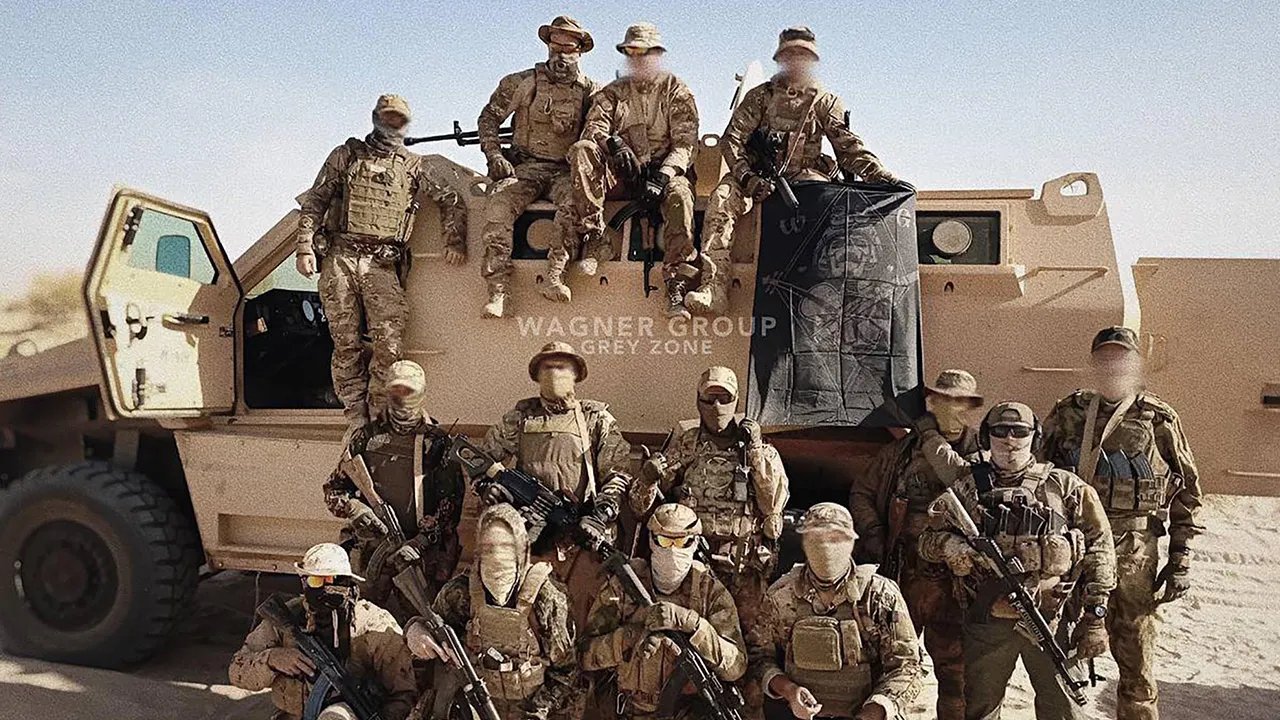
NEWYou can now listen to Fox News articles!
Analysts claim the withdrawal of U.S. and European troops from countries in Africa’s Sahel, and their replacement by Russian mercenaries, has led to a spike in jihadist-driven terrorism.
The Sahel is a belt of countries running roughly west to east across the continent just below the Sahara Desert. A total of 3,885 deaths — about 51% of all terrorism-related fatalities globally in 2024 — occurred in the Sahel, according to the Global Terrorism Index.
In at least three Sahel states — Mali, Niger and Burkina Faso — military juntas that came to power in coups, notably Niger and Mali, have expelled Western military forces. The U.S. was asked, after 11 years in the country, to halt anti-terror drone operations from two bases in Niger last year. In Mali, French forces were ejected in 2022 after battling Islamist terror groups for nine years.
Governments have turned to the Kremlin’s private mercenary army, the Africa Corps — formerly known as the Wagner Group — for protection. But the Russians are reportedly more interested in extracting minerals than helping stop the spread of jihadism.
IS TRUMP CONSIDERING BOLD AFRICA PLAY TO PUSH BACK ON CHINA, RUSSIA AND ISLAMIC TERRORISTS?
Supporters of Niger’s National Concil of Sefeguard of the Homeland (CNSP) hold a Russia (R) and a Chinese (L) flag as they gather at Place de la Concertation in Niamey on Aug. 20, 2023. (Photo by -/AFP via Getty Images)
Ordinary people often bear the brunt of jihadist attacks in the Sahel. Last month, Islamist gunmen on motorbikes reportedly killed 22 people in an attack on Tillaberi village in western Niger. Fifteen of the dead were families attending a naming ceremony for a child, reports said. In northern Mali in January, Russian mercenaries allegedly joined government forces in executing 10 civilians, including a 2-year-old boy.
In the Sahel, «groups affiliated with the Islamic State and al-Qaeda are continuing their territorial and strategic advance,» the Observer Research Foundation reported in August, «taking advantage of governance gaps and weak security forces to push into littoral West African states such as Benin and Togo.»
«The situation in the Sahel, particularly in Niger, Mali and Burkina Faso, has rapidly deteriorated since the U.S. and French have withdrawn from the countries following the coups,» Bill Roggio, senior fellow at the Foundation for Defense of Democracies,(FDD) told Fox News Digital.
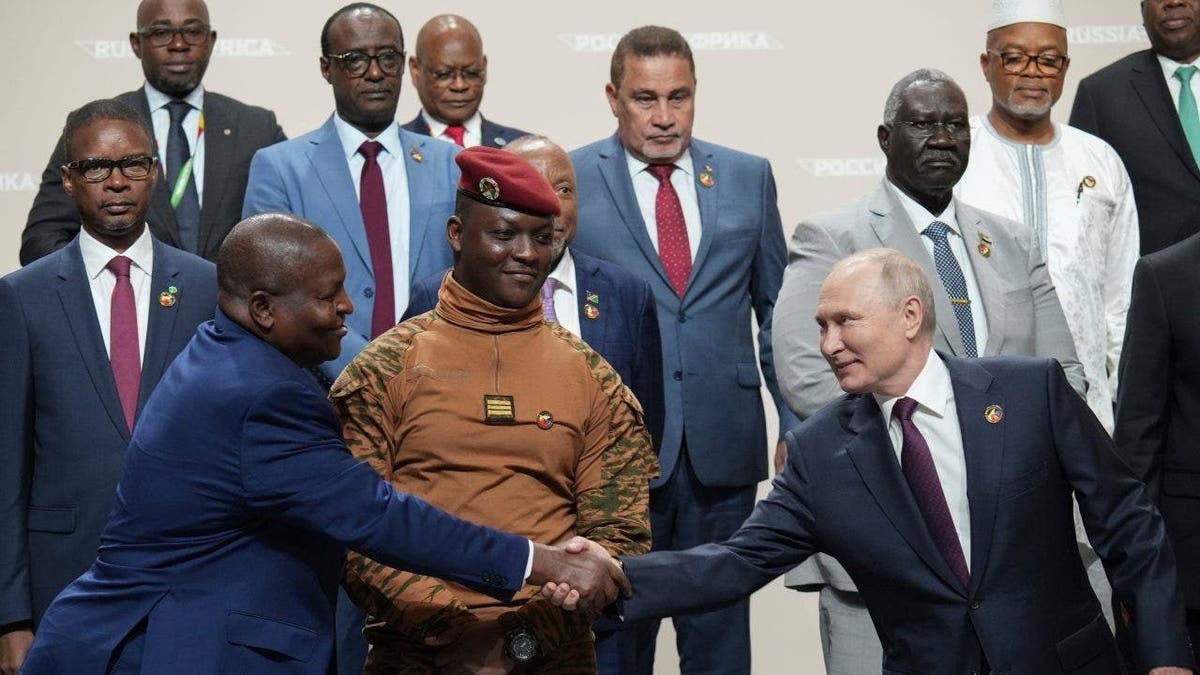
Russian President Vladimir Putin, right, and Mozambique President Filipe Nyusi shake hands during a family photo opportunity during the Russia Africa Summit in St. Petersburg, Russia, Friday, July 28, 2023. (Alexei Danichev, Sputnik, Kremlin Pool Photo via AP)
Roggio, also editor of the FDD’s Long War Journal, added, «The reality is that the situation was bad before the U.S. and French left the region, but the drawdown of U.S. and French forces has exacerbated the jihadist advances.»
«Both al Qaeda’s branch in the region, JNIM, (al Qaeda-linked Jama’a Nusrat Al-Islam wa al-Muslimin) and the Islamic State have made gains and control significant enclaves in the countries … The juntas in these three countries wanted the West out, and have turned to Russia to provide security via Wagner, which is now ironically called the Africa Corps.»
US–RUSSIA FLASHPOINT LOOMS OVER PUTIN’S PLANS FOR AFRICAN NAVAL BASE
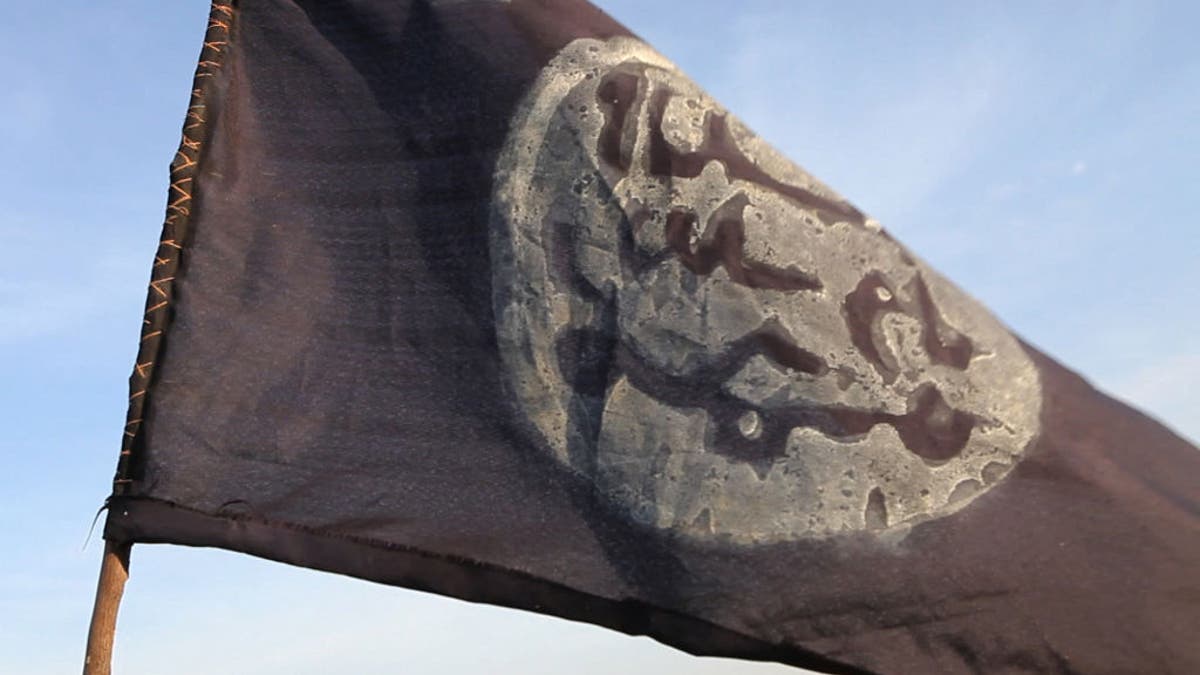
A Boko Haram flag flutters from an abandoned command post in Gamboru deserted after Chadian troops chased jihadists from the border town on February 4, 2015. (Stephane Yas/AFP via Getty Images)
«The Russian forces have little incentive to improve security and focus on securing mineral resources for profit,» Roggio added. «This further fuels the jihadist insurgencies, which prey on civilians caught between the jihadists and weak-to-nonexistent governments in some cases. There is little the U.S. can do at the moment, as these governments are anti-West and do not want a return of U.S. and French forces. And I am not sure either country has the political will or desire to return.»
Dr. Frans Cronje, a political and economic analyst, said in an interview with Fox News Digital that during the run-up to the 2023 coup in Niger, a sophisticated political and media campaign sought to turn public opinion against Western influence, often using anti-colonial themes popular in Western political culture.

Russia’s Wagner group mercenaries in Mali, Africa. (East2West)
Cronje continued, «French and U.S. stabilization efforts were tarred as imperialist interference and worse. That was on top of the fact that French and U.S. troops were already under severe strain in combating a jihadist insurgency that threatened the civilian population. You could make the case that even without the coup, the Western position was untenable, short of committing ever greater volumes of arms and munitions to a war very far away from Paris and Washington.»
Cronje agreed with Roggio in his assessment of the Kremlin’s position: «Russia’s forces have now filled the gap left by the French and Americans, but Russia’s objective is securing resource supply chains — not civilians.»
CLICK HERE TO GET THE FOX NEWS APP
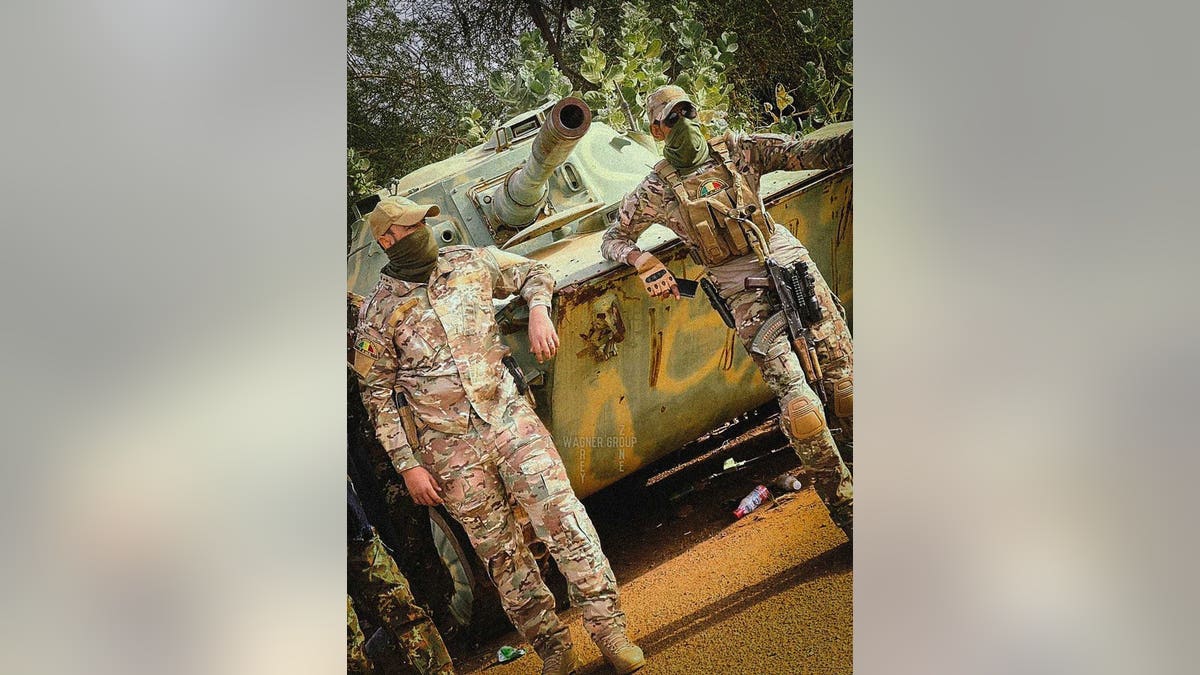
Wagner mercenaries in Mali, December 2023. (East2West)
He concluded, «It is difficult to say if this situation could have been avoided. The only way to do it would have been to run political and media operations to build popular support for Western actors, then install a pro-Western administration and, beyond that, vastly increase Western military resources, including troops, deployed in Niger. All a bridge too far for Western actors — and, in many respects, understandably so.»
A State Department spokesperson told Fox News Digital, «The United States has engaged with Sahelian countries using a pragmatic approach that focuses on advancing our foreign policy priorities. Deputy Assistant Secretary of State Will Stevens’ recent visits to the region reinforced the U.S. government’s work with host country officials to advance U.S. commercial opportunities and to engage on strategic counterterrorism priorities to mitigate threats to U.S. personnel and interests.»
isis,russia,africa,conflicts,terrorism
INTERNACIONAL
REBECCA GRANT: How Tomahawks work and how they could change everything for Ukraine
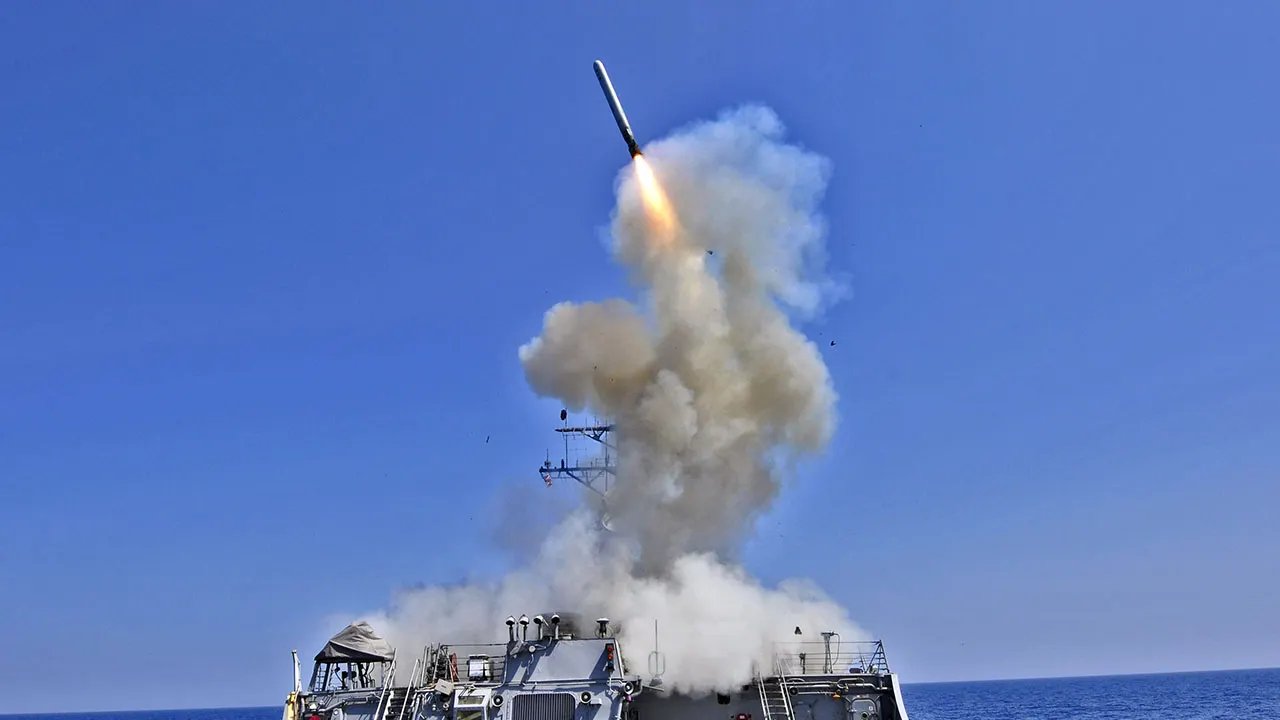
NEWYou can now listen to Fox News articles!
Tomahawks, Tomahawks, Tomahawks. That’s the word buzzing in the ears of Russian President Vladimir Putin, as President Donald Trump weighs providing America’s precision strike missile of choice to Ukraine.
Since May, Trump has bombed the Houthis in Yemen, obliterated Iran’s nuclear facilities and hit narco-terrorist drug boats in the Caribbean. Putin has to realize that Tomahawks could soon be in the skies over Russia.
What can Ukraine hit with the 1,000-mile-range Tomahawks? Start with the Shahed drone factory in Tatarstan, and at least 67 Russian airbases. Tomahawks in Ukraine’s hands rip open Russian energy infrastructure to precision attack with no warning.
ZELENSKYY PITCHES TRUMP ON UKRAINE DRONE-FOR-TOMAHAWK MISSILE EXCHANGE AS PRESIDENT WEIGHS ESCALATION CONCERNS
If Ukraine launches Tomahawks, they’ll be flying as low as 100 feet, hugging the terrain, evading radar. TLAMs can each take separate routes at 500 mph and then meet up over the Russian target for a coordinated strike.
Trump is baiting Putin. «Hopefully, they won’t need it,» Trump said of the Tomahawks at Friday’s lunch with Ukrainian President Volodymyr Zelenskyy at the White House. Trump said he’d like to «get the war over without Tomahawks» but then went on to describe the missiles as «very dangerous» and «incredible.»
President Trump is considering giving powerful Tomahawk missiles to Ukraine, a move that has gotten Russian President Vladimir Putin’s attention. (Getty Images)
Here’s the backstory on the Tomahawks and why Trump is keeping them on the table to pressure Putin.
Built for the Russian target set
First tested in 1972, the Tomahawk Land Attack Cruise Missile, or TLAM, was actually developed by the U.S. Navy during the Cold War to attack targets on land in the Soviet Union. In case you haven’t seen one up close, the Tomahawk is 20 feet long but just 21 inches wide. It looks like a white pole with winglets, but inside is a powerful turbo-fan engine and sophisticated guidance. Today’s Block IV Tomahawks can be retargeted in flight, and loiter over a target for hours, taking electro-optical scans and waiting for other missiles to arrive before detonating. They carry a unitary warhead for harder targets, or dispense cluster munitions over a wide pattern to hit airfields, for example. (Yes, there was once a nuclear TLAM variant with a 200 Kiloton warhead, but they were placed in storage in 1991 and eliminated in 2010.)
Air Defense Nightmare
The presence of Tomahawks in Ukraine will set up an almost insoluble air defense problem for Putin. No way can Russia place air defenses at every remote gas pipeline point or cover all the airbases where planes park out in the open.
Fast delivery
TLAMs could be in Ukraine in 24 hours. The Army Mid-Range Capability missile system is a tractor-trailer missile launcher that can be driven onto a U.S. Air Force C-17 cargo plane. The Army deployed TLAM launcher 8,000 miles away to North Luzon in the Philippines in under 15 hours last year for a wargame. Trump has plenty of time.
Deterring Putin. The brutal escalation of mass attacks by Russia led Ukraine to ramp up its drone strikes on Russian energy starting in August. According to a Reuters study, Ukraine’s drones have hit 18 pumping stations, plus 32 strikes on refineries. Ukraine’s Liutyi drones have a range of about 600 miles and carry warheads of about 50 pounds. Mixing in TLAMs would intensify pressure on Russian energy, Putin’s single biggest source of government revenue. Zelenskyy has called Ukraine’s drone attacks on Russian energy «the sanctions that work the fastest.»
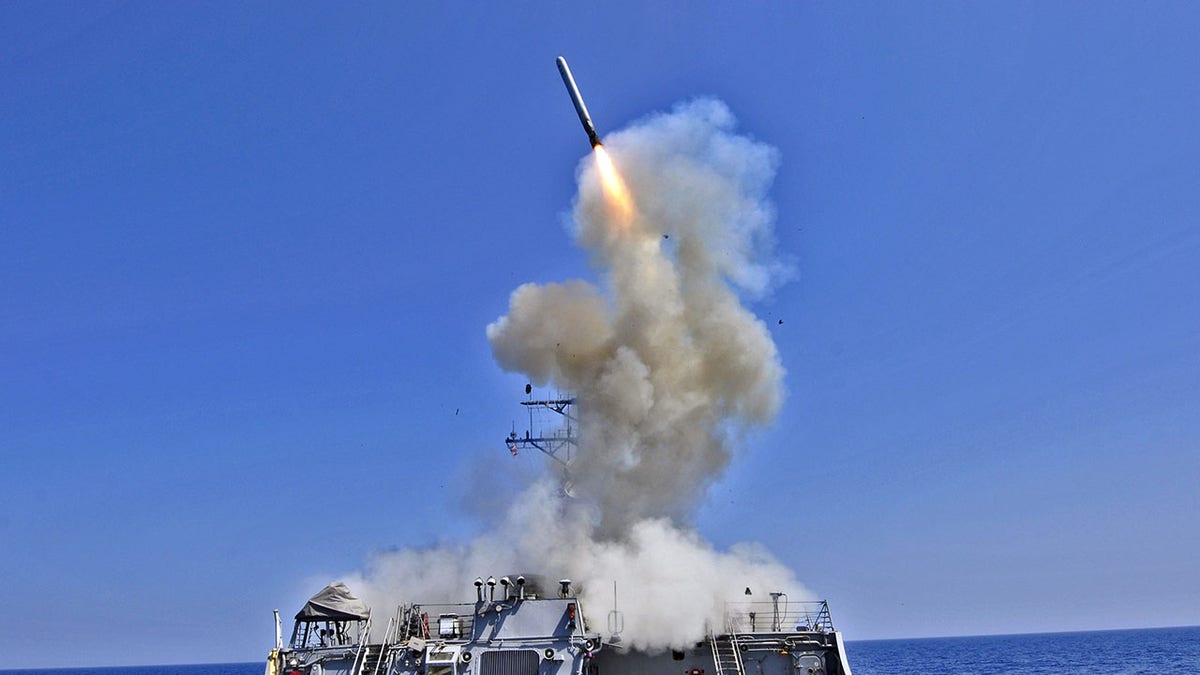
In this handout released by the U.S. Navy, the guided-missile destroyer USS Barry (DDG 52) launches a Tomahawk cruise missile in support of Operation Odyssey Dawn. (U.S. Navy via Getty Images)
Don’t worry about depleting TLAM inventory
The U.S. still has about 4,000 Tomahawks in its inventory, and new missiles like the U.S. Navy’s SM-6 are already in action. The U.S. Army deployed its new Dark Eagle long-range hypersonic weapons to Australia in August and will have its first full battery by December. By the way, last year Japan bought 400 Tomahawks for targeting China and North Korea.
Combat Record
Tomahawks have piled up an incredible combat record since Jan. 17, 1991, when 122 TLAMs hit Iraqi oil and command and control targets at the start of Operation Desert Storm. Eight-hundred TLAMs were fired in Operation Iraqi Freedom in 2003. Over the years, Tomahawks have hit targets in Iraq, Serbia, Afghanistan, Libya, Syria, Yemen and, of course, Iran. On June 22, TLAMs hit above-ground «key surface infrastructure targets» in the nuclear complex at Isfhahan, according to Chairman of the Joint Chiefs of Staff Gen. Dan Caine. The TLAM strikes left the sprawling site visibly damaged and blackened. «We gave it a capper with 30 TLAMS,» as Trump said Friday.
Putin may yell and scream about Tomahawks for Ukraine. Pay no attention. He’s grumbled about each weapon system, from F-16s to Patriots. And no, Putin does not dare escalate with nuclear weapons in Ukraine, because the wind patterns blow radiation clouds back into Russia.
As Trump said Friday: «Yeah, its escalation. But we’re going to talk about it anyway.»
ukraine,russia,military tech,defense,donald trump

 CHIMENTOS3 días ago
CHIMENTOS3 días agoLaura Ubfal mostró una escandalosa foto de Mauro Icardi con la hija de Benjamín Vicuña

 CHIMENTOS3 días ago
CHIMENTOS3 días agoSe confirmó de qué murió la famosa actriz Diane Keaton a los 79 años: «Murió a causa de una neumonía»

 POLITICA3 días ago
POLITICA3 días agoSantiago Caputo le respondió a Macri, que había pedido diálogo post electoral














